This article was co-authored by wikiHow Staff. Our trained team of editors and researchers validate articles for accuracy and comprehensiveness. wikiHow's Content Management Team carefully monitors the work from our editorial staff to ensure that each article is backed by trusted research and meets our high quality standards.
There are 9 references cited in this article, which can be found at the bottom of the page.
This article has been viewed 102,097 times.
Learn more...
Sending a package to Mexico is relatively straightforward, involving most of the same procedures as sending a package to anywhere else in the world, domestic or international. The main thing you'll have to make sure of when preparing to send the package will be selecting a mail carrier that can both accommodate the size of your package and ships into the country. Other than that, you will simply need to adhere to Mexican and international mail regulations, fill out the required paperwork, and send the package on its way.
Steps
Choosing a Carrier and Heeding Shipping Regulations
-
1Select a public carrier for the most economic shipping. Use the United States Postal Service or your local public carrier for the most economic shipping options. Note that these shipping options will typically take a little longer to get there (about 6-10 business days) than private carriers.[1]
- Note that public postal carriers may have more restrictions regarding the size, shape, and contents of your package.
-
2Select a private carrier for the most flexibility on size and weight. Use a private carrier that ships to Mexico, such as UPS, DHL, FedEx, or NEX Worldwide Express, to send large or unusually shaped packages. Private carriers can often get international packages to Mexico more quickly than public ones (about 2-3 business days), though they are typically pricier, too.[2]Advertisement
-
3Crosscheck your item against the restricted imports list. Consult Mexico’s Secretariat of Finance and Public Credit website to find out if your item is prohibited from entering Mexico. These items cannot be imported into Mexico by mail or in person and will result in the rejection of your package. In certain circumstances, they could also result in fines or criminal prosecution.[3]
- You cannot send: narcotics; live predatory fish; degrading, sexual, or violent images of children; used clothing or footwear that are not your own; weapons; or ammunition.
- Note that certain medical products are heavily regulated and will need to be registered with the Mexican Secretariat of Health (SSA) if they are going to be resold in Mexico. Contact the SSA at peticionesciudadanas@salud.gob.mx for further direction if you are shipping medical products.[4]
-
4Adhere to your carrier’s country conditions for mailing. Consult your carrier to determine if any items are prohibited from being sent to Mexico through their service. Many carriers have conditions beyond Mexico’s requirements for the type of items they accept in packages. These vary from carrier to carrier.[5]
- For the US Postal Service, for example, perishable food items, jewelry, currency, radioactive materials, work infringing on Mexican copyrights, lottery tickets, cosmetics, and more are not accepted in packages to Mexico.
- If you have questions, call your carrier and talk to a representative about your item. It’s best to find out ahead of time if your item will not be accepted rather than risk the packaging being rejected or destroyed.
-
5Check the size and weight of your item against your carrier’s limits. Look on your carrier’s website to determine any size requirements for packages being sent to Mexico. The US Postal Service, for example, does not accept packages to Mexico with a combined length and girth greater than 108 inches (270 cm).[6]
- The package typically must also be large enough to completely contain the bill of lading, any customs forms, postage, and additional markings for tracking and insurance, if desired.
-
6Check the value of your item against your carrier’s limits. Consult your carrier’s website to determine if there are any limits on shipping expensive items to Mexico. Even with insurance, it’s possible your carrier will not accept items of exceptional value. There are typically specific limits depending upon which country you’re sending to.[7]
- For example, the US Postal Service does not accept items with a value greater than $2,499 USD in shipments to Mexico.
Packing Your Item Securely
-
1Choose a sturdy box with room for cushioning around the contents. Select a cardboard or corrugated fiberboard box to withstand shipping. Make sure there is at least 1 inch (2.5 cm) between the item and any interior side of the box to help avoid damage to your item in transit.[8]
- You can purchase boxes at your local carrier’s office, a home goods store, or recycle one.
-
2Cushion your items so they do not shift in transit. Use wadded up newspaper or packing peanuts to fill the space between your item and the box. This padding will keep your item from rattling during shipping and can help prevent damage.[9]
-
3Seal all seams with packing tape at least 2 inches (5.1 cm) wide. Use packing tape to secure your package on the top, bottom, and sides. Go over any unstable areas with a second layer of tape if needed.[10]
-
4Remove previous labels or black out old details with a permanent marker. Use your fingers to peel off any old labels on the outside of the box or cross out old details fully with a dark permanent marker. This only applies if you are recycling a shipping box.[11]
-
5Mark the package as fragile if applicable. Write fragile or frágil (Spanish) on the exterior of the box to denote breakable contents. Even if your item isn’t expressly fragile, requesting that the carrier take additional care with your shipment can’t hurt.[12]
Shipping Your Package to Mexico
-
1Create a bill of lading. Fill out a bill of lading, either in person at your carrier’s office or online. A bill of lading is effectively your receipt for the shipment and a contract for the shipping service. It also serves as title of ownership for the contents of your package.[13]
- Your bill of lading will often include your address, the type of delivery service, and the address of your recipient.
- Write Mexico after the destination city in your recipient’s address to avoid any potential confusion with local zip codes.
-
2Fill out any required customs forms. Complete all fields of the customs forms your carrier provides, including the contents of your package and its approximate value. Often you will need to itemize contents. It can be helpful to complete customs forms at your carrier’s office rather than online, so an agent can answer any questions. They can also offer tips on how to fill the forms to minimize delays to your package.[14]
- If shipping with the US Postal Service, for example, you will need to fill out PS Form 2976-B and place it inside a plastic envelope.[15]
- Depending upon your carrier, you may also need to include documents demonstrating a guarantee of payment for additional duties in case the Mexican authorities determine you’ve undervalued the contents of your package.
- Note that any goods entering Mexico are subject to inspection by the Mexican authorities. All items need to be in adherence with Mexico’s restricted imports list to avoid seizure.
-
3Insure your package. Consult your carrier about the fees to insure your package in case it is lost or damaged in transit. The cost to insure your package is typically a sliding-scale fee based on the declared value of the item.[16]
-
4Track your package. Keep an eye on your package in case it is lost or misdelivered by paying an additional fee for tracking service. This will enable you to track your package on your carrier’s website to chart its progress en route to your destination.
Community Q&A
-
QuestionThe USPS said Mexico does not honor the American tracking or insurance process. How is the best way to guarantee delivery?
 DonaganTop AnswererThere are no guarantees. All you can do is pay your money and take your chances.
DonaganTop AnswererThere are no guarantees. All you can do is pay your money and take your chances.
References
- ↑ https://www.usps.com/international/priority-mail-express-international.htm
- ↑ https://bizfluent.com/how-5162582-ship-packages-mexico.html
- ↑ https://consulmex.sre.gob.mx/reinounido/index.php/es/servicios-a-extranjeros/79
- ↑ https://www.gob.mx/salud/en#396
- ↑ https://pe.usps.com/text/imm/mo_011.htm#ep1249777
- ↑ https://pe.usps.com/text/imm/mo_011.htm#ep1249777
- ↑ https://pe.usps.com/text/imm/mo_011.htm#ep1249777
- ↑ https://pe.usps.com/text/dmm100/preparing-packages.htm
- ↑ https://pe.usps.com/text/dmm100/preparing-packages.htm
- ↑ https://pe.usps.com/text/dmm100/preparing-packages.htm
- ↑ https://pe.usps.com/text/dmm100/preparing-packages.htm
- ↑ https://pe.usps.com/text/dmm100/preparing-packages.htm
- ↑ https://bizfluent.com/how-5162582-ship-packages-mexico.html
- ↑ https://pe.usps.com/text/imm/mo_011.htm#ep1249777
- ↑ https://about.usps.com/forms/ps2976b.pdf
- ↑ https://pe.usps.com/text/imm/mo_011.htm#ep1249777
About This Article
Sending a package to Mexico is relatively straightforward and mostly the same as shipping a package domestically. Use USPS or your local public carrier for the most economic option, but keep in mind this will generally take a little longer than private carriers. Make sure you check your carrier’s regulations for shipping contents. For example, with USPS, you can’t ship perishable foods, jewelry, cosmetics, or items worth over 2,500 dollars to Mexico. If your package is delicate, cushion it with balled up newspaper, bubble wrap, or packing peanuts to protect it in transit. Remember to write Mexico at the bottom of the address to avoid confusion with U.S. zip codes. You’ll need to fill out a bill of lading and any other required customs forms, either at your carrier’s office or online. Order insurance or tracking with your shipping service if you want to ensure your package arrives on time. For more tips, including how to check your carrier’s size and weight restrictions, read on!





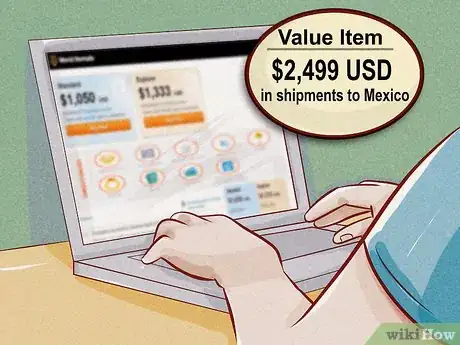






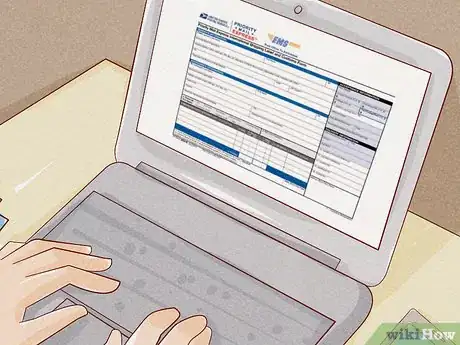
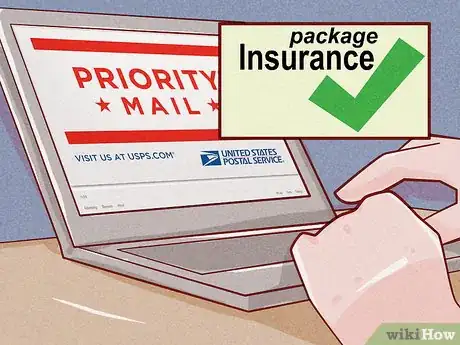


-Step-12-Version-2.webp)





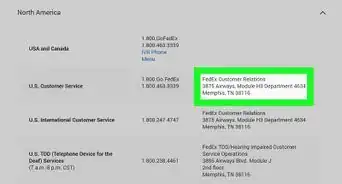



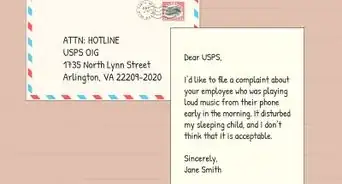












-Step-12-Version-2.webp)




































